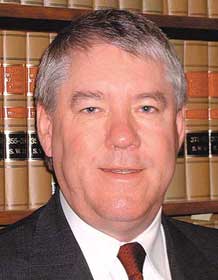Confusion has reigned since 1979 about exactly what Texas County Appraisal Districts are, what they do, and who is in charge. To understand, you have to go back to “the way it used to be.”
Before 1979, state law provided for each local taxing unit to do its own appraisal of properties within the unit’s boundaries. A single property would be appraised separately by the county, the city, the school, and any other taxing unit that the property fell within. The appraisals could and did vary greatly, and it was up to the owner to protest what they considered unfair appraisals to each individual taxing unit’s “Board of Equalization.”
Reappraisal was unpopular, and voters vigorously opposed reappraisal of existing property on the grounds that it would increase valuation and taxes. Since virtually all of the members of the Boards of Equalization were elected, reappraisal was avoided. As a result, new property added to the tax rolls usually was appraised at a higher value than existing property and carried an unfairly large tax burden.
To solve these issues, the Texas Legislature passed Senate Bill 621 in 1979. The goals were to have provisions that govern the rights and responsibilities of property owners and officials, and to provide separation of responsibilities. The separation of responsibilities is designed to ensure equality of treatment under the tax system. Removing politics from the appraisal of property by governing bodies was key, as well as providing for mandatory reappraisal of property at least every three years.
So, one appraisal district was established in each of the 254 counties. The reference to the “county appraisal district” is simply because each appraisal district and its responsibilities are confined to each county. The appraisal district budget is funded by all of the taxing units within that county.
The Appraisal District Board of Directors is currently elected/appointed by the participating taxing units with the tax assessor-collector serving as an ex-officio member. Recent legislation will change the makeup of the board to five appointed members and three publicly elected members along with the tax assessor-collector. Their responsibility is to establish an appraisal office, hire a chief appraiser, and provide a budget for the operation of the office. The board of directors has no input or responsibility for the appraisal of property. Appraisal processes are governed by the Texas Property Tax Code.
The appraisal district identifies, lists, and provides an estimate of value for each property within the county. Appraisal districts are required to appraise property at full market value, and all taxing units within the county are required to use the values that are certified within their unit boundaries. Multiple boards of equalization went away, replaced by a Central Appraisal Review Board (ARB) in each county.
Taxpayers now take protests about property matters that adversely affect them to one ARB that decides the matter for all taxing units in the appraisal district. Currently, ARB members are appointed by the local administrative district judge in counties where the population is 120,000 or more.
The information for each year’s tax rolls is based entirely on the data received from the appraisal district. The accuracy and timeliness of the information and the ability of the tax assessor-collector and the chief appraiser to communicate and have a good working relationship is key to providing the funds needed to provide the services your constituents expect.
















